#periphery
Text









born from her mother’s wrath.
russian doll (all gifs from trueloveistreacherous) / on earth we’re briefly gorgeous — ocean vuong / like mother, like daughter — frances kearny / mother — john lennon / I, tonya / shameless / piss river — kevin morby / camille preaker & rue bennett / killing eve / the witch / pearl — mitski / spellbinding photos of a mother and daughter lost in their own fantasy world — sahara borja / poplar street — chen chen / kyoto — phoebe bridgers / the unbearable lightness of being — milan kundera / ladybird, thirteen, sex education / black swan / elektra / hurt — nine inch nails
#periphery#web weaving#tartarus#mommy issues#family#mother#mum#class of 2013#mitski#black swan#ladybird#ocean vuong#russian doll#concept#compilation#phoebe bridgers#sharp objects#camille preaker#euphoria#rue bennett#nina sayers#mommy issues web weaving#tonya harding#mother’s rage#toxic mom#poetry#on mothers#art#my compilations
4K notes
·
View notes
Text
Mechwarrior Monday!

Yes. It is Atlas time - my first Atlas is done.
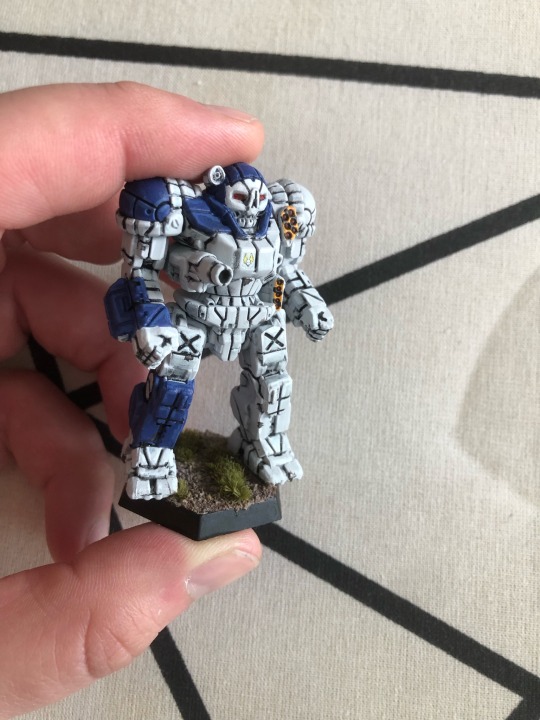

Awe inspiring machine; with my chosen colors the white death heqd does not pop as it should, but overall very happy. Applied transfers too; might add a few more just because.
Meanwhile, on the Periphery:


First Lance is progressing; after I am done with those four I will paint up my four Urbies… good times!
171 notes
·
View notes
Text
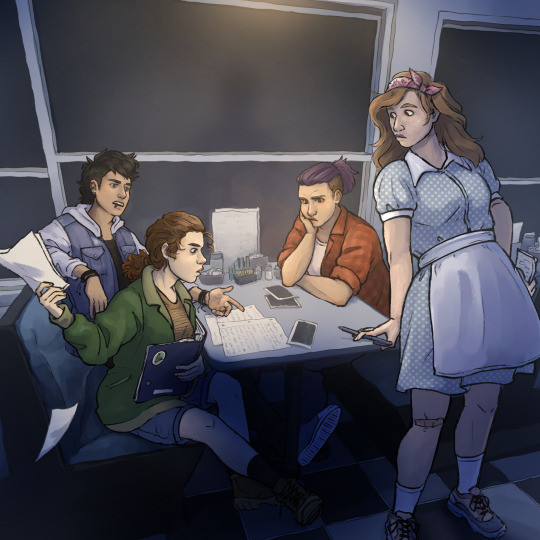
A ghost hunting crew for all the ages. The marshes are alight and dammit if these loveable goofs arent gonna get to the bottom of it
#not my ocs#but i do fancy myself a godfather of sorts#digital art#horror art#ttrpg#character art#ttrpg oc#ttrpg character#oc art#digital artist#character design#digital illustration#original character#original characters#rural horror#small town horror#periphery
56 notes
·
View notes
Text
No information on this upload, and I might not have links/screenshots for any more going forward unless I happen across some. I'm not actively searching for lost media though so 🤷♀️I hope you enjoy regardless 🖤
March 2024 Update

The way I read this description, went "HA! I knew Ves was a dog person!" and then paused to think and went on a Google spree. For my friends outside of the UK, a sherbet lemon is a type of hard candy with a powdered sherbet filling. Ves, I... I don't think puppies are supposed to eat these, mate...
Aaany way, now Ves is playing stadiums and we've come full circle here 😌
#lost media#circa 2012#periphery#the band periphery#periphery letter experiment#piano cover#forever thanking ves for getting me into this band#even bought a tshirt to wear to an st ritual#(if i can get in/get tickets)
20 notes
·
View notes
Note
How would the food supply chain work for city states in in places like Ancient Greece and more recently, the Italian City States? Would they control agricultural land, or would they have to buy food from nearby (or perhaps not so nearby) agricultural regions? What measures would they take in times of war to avoid having their food supply cut off?
Great question!
To answer "How would the food supply chain work for city states," I would answer by answering your other question "Would they control agricultural land, or would they have to buy food from nearby (or perhaps not so nearby) agricultural regions?" by saying: it's both.
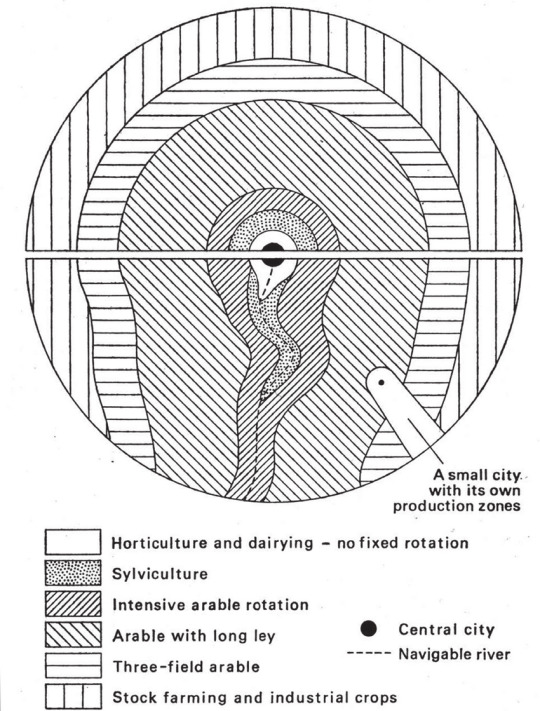
Paradigmatically, a city-state consists of a metropole (the city in question) and the periphery (subordinated lands and territories under the city's control). (Or metropolis and hinterland, if you prefer). To further break this down, the periphery consists of a mix of different lands, including both overseas colonies and tributaries, conquered (and thus lesser and weaker) city-states and their peripheries, and the agricultural hinterland around the metropole. To take just this last category, we can think of the relationship between Athens and Attica, Rome and Latium, Venice and the Mestre and Veneto (everyone always focuses on Venice's overseas empire, but it's rarely remembered that Venice at its height basically controlled all of northeastern Italy and fought Milan for northcentral and parts of northwestern Italy), or Florence and (eventually all of) Tuscany.
How far that agricultural hinterland extended beyond the city's walls depended a lot on transportation technology. Brett Devereaux has very good (but lengthy) explanations of the difficulties of overland grain trade here and here, but the TLDR is that, as a rough rule of thumb, "the price of grain doubles every hundred miles it is moved overland." Those kind of price increases aren't really affordable, so I think if you're looking for a rough rule of thumb, a hundred miles is probably a good maximum radius for an agricultural hinterland, whereas the minimum radius is probably around 7-12 miles (based on medieval urban regulations for agricultural markets), which was roughly how far a cart could travel in a day.
However, certain factors can change the effective radius of the hinterland:
The more and better roads you have, carts can move faster and come from more directions/places, which effectively expands that cart/day radius.
If the city is on a river (and this is one of the main reasons why most historic cities were on rivers, if they weren't on coasts), you can use river-barges to transport grain. Sail-barges could travel 14 miles an hour in good winds, and tow- or pole-barges could do 10-40 miles a day (depending on whether they were going upriver or downriver). Moreover, because of buoyancy, barges can carry much heavier loads than carts, which makes them much more eficient in transporting bulk goods like grain.
Finally, the population density and degree of urbanization matters, because it raises the possibility of making partial trips, because smaller population centers will act as local metropoles and more efficiently bring in grain from rural areas allowing for more efficient routes; also, higher density and urbanization allows for the creation of a network of granaries that allow you to store grain along the way so that you can make partial trips rather than covering the whole distance from the city to the very edge of the periphery.
However, the hinterland usually wasn't enough on its own to supply the city-state, but the same advantages of wind-speed and buoyancy also meant that a long-distance overseas grain trade was absolutely viable in both the Ancient and Medieval worlds. So for example, Greek city-states would draw on grain from southern France, southern Italy and Sicily, the Black Sea, and Anatolia; much of Rome's grain supply came from North Africa and Egypt; and so on. Moreover, as Fernand Braudel points out, the interconnected grain trade of the Mediterranean was the indispensable foundation for southern European urbanism from the Middle Ages through to the Early Modern period, and the geospatial dynamics of that system did not really change that much until the invention of the steam engine.

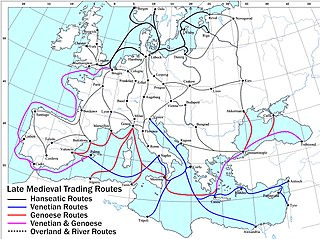
To answer your final question - "What measures would they take in times of war to avoid having their food supply cut off?" - it was usually by a mix of metropolis/hinterland logistics and long-distance trade. A well-organized city-state would have granaries set up both in the city and in the more urbanized areas of the periphery and would have contingency plans to harvest and transport as much grain as possible to the city to use as reserves in a time of crisis. (You'll note that this leaves the periphery in a really bad situation in times of crisis, and this prioritization of the metropole over the periphery is one of the main reasons why it sucked to be in the periphery, which is why there was so much competition over who got to be the metropole and why there were so many rebellions on the peirphery.)
At the same time, if the city-state had naval supremacy over its enemies, it could pretty much indefinitely hold out against its enemies as long as it could maintain a lifeline to the sea. This is why Athens was able to hold out against Sparta for so long during the Pelopennesian War, why Constantinople won so many of its sieges, and why Venice was able to take on most of Europe and still come out on top most of the time.
#history#ancient history#medieval history#renaissance history#city-states#metropole#periphery#metropolis#hinterland#logistics#economic history#medieval economics
63 notes
·
View notes
Text


Longing for something beyond🪽
I was inspired by my favorite band Periphery's Juggernaut. Get to see them this weekend, can't express how excited I am!!!!
#periphery#periphery band#digital art#original art#art#procreate#drawing#sketch#artists on tumblr#my art#my artwork
31 notes
·
View notes
Text
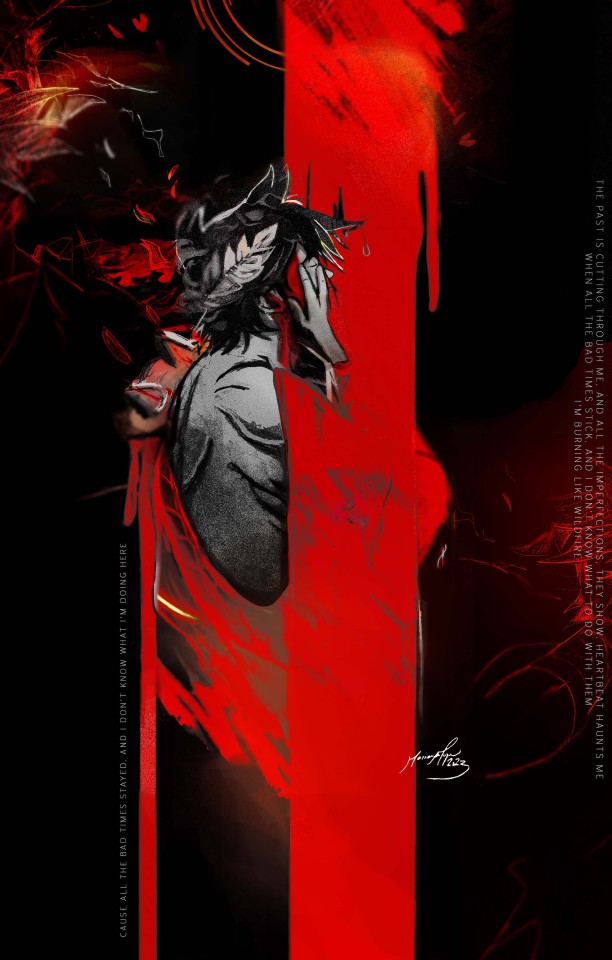

“Fill out the ballot and give our permission, over and over again and again.”
I just think it’s incredibly neat that Periphery made a song inspired by Hades. This one takes from the ‘Wildfire / Zagreus’ tracks. (Long enjoyed watching my partner run through Hades so the imagery is seared into my mental vault)
The worlds, they collide yanno 🖤🍷
#hades game#zagreus#hades fanart#periphery#game art#music artwork#digital illustration#djent is not a genre#blood#monochomatic#Just the art this time#zagreus fanart#supergiant games#music portrait series#May's arts#Exiled Arts#artists on tumblr
24 notes
·
View notes
Text
Often such cities (Wichita, Kansas; Iowa City, Iowa; Reno, Nevada) are dependent on a single, relatively small industrial complex, the loss of which would be capable of unbinding the entire local economy -- as has already happened with many of the smaller Rust Belt cities of the northeast.
In Wisconsin, the harshest dissonance came not from the wreckage of the industrial past coexisting with myths of a new “green” economy to come, but instead from the age of this particular Rust Belt. This was not a region simply bankrupt by the post-1970s restructuring, like much of the northeast, nor was it just one among many areas passed over for wartime or New Deal investment during the twentieth-century’s middle age of war and depression. Instead, these ore docks and sunken ships were the ruined pillars of an industrial edifice that began its collapse as soon as it was built, ultimately becoming little more than an ancillary to greater cities along the southern stretches of the Great Lakes. It was not just a Rust Belt, then, but a single ghostlike megacity that had never taken form. Stillborn, its remains were overgrown, often barely recognizable as things built by humans: pillars of finely designed iron, steel, and concrete now vinewrapped, eroded, and regressed to their deeper geological natures.
---
The ore docks had followed the railroads, most built in the late nineteenth century and the last built around the First World War to supply renewed demand for steel in the industrial core. Early on, the region imagined that it would become an economic capital unto itself, comparable to Chicago in its industrial capacity and exceeding it in natural amenities.
In 1893 the city of Ashland, Wisconsin, hosted sixteen commercial docks and loaded seven thousand ships, the second busiest port on the Great Lakes. Population had exploded and receded several times, following the whims of the railroads and industrial crises that defined the later nineteenth century. [...]
When the railroad chose the area for its bayside terminus, however, the population recovered, and the town was deemed “The Future Iron City of Lake Superior.” But the Panic of 1873 -- called the Great Depression before it was superseded by greater ones -- was followed by a series of labor conflicts, the peak of which was the “Ashland War” in the winter of 1872/3, in which workers demanding unpaid wages were rounded up by a local militia and forced to walk 80 miles to a neighboring town in the subzero winter.
---
Another brief boom saw the construction of the first ore docks, offering a glimpse at the prophesied “Iron City” -- a mirage that collapsed again with the Panic of 1893.
The next boom came in the early 1900s, followed by the Panic of 1907, the Panic of 1910–11, the recession of 1913–14, and the First World War boom that would see the last of the ore docks constructed, at which point there was little left in the old dream of the northern metropolis.
Harsh winter blizzards passed over the industrial skeletons, guaranteed to be nothing more than servants to an economic renaissance centered elsewhere. [...]
---
In winter, when the lake froze, you could walk out on the ice and climb onto the only remaining ore dock, otherwise inaccessible. I went once with a friend as a blizzard gathered in the northern stretches of the jagged, iced-over wasteland that was Lake Superior. [...] From the edge of the dock, you could see it coming like a giant wall of static. [...] As the blizzard neared, the snow shot horizontally through the dock’s towering concrete pillars, as if we were on some sort of entirely uncontrollable vessel traveling at a great speed towards a destination that we could neither see nor choose. This feeling is what I tend to recall when trying to imagine the true scale of these massive, seemingly immovable economic trends.
---
Text by: Phil Neel. Hinterland: America’s New Landscape of Class and Conflict. 2018.
174 notes
·
View notes
Text
Late Night Ramble About Long Ass Songs
I think it's fair to say songs have to earn their length. At the very least, that's how I feel. If a song is 15+ minutes long, it'll likely live and/or die by its intrigue alone. If a song is 45 seconds, it better make each and every one of those seconds count.
I think a phenomenal example of a short song is Vildhjarta's "Måsstadens Nationalsång", coming in at an incredibly brief 47 seconds. This track is punchy as hell, and it only gets more satisfying the longer you listen. It presents itself in its entirety; completely identifiable and unique from the rest of the album, then it effortlessly transitions into the next song like it's nothing. It's genuinely great.
youtube
But on the other end of the spectrum, you have songs that will likely absolutely dwarf the others in your playlist with their sheer size. It can be a bit intimidating when you go to check out a new album you've never heard and all of the tracks are upwards of 10 minutes. That is a lot of time to dedicate to the same artist—especially if you have other things you want to do with your time. But, man, the musicians that pull it off really hit it out of the park for me.
I fuckin' love long songs. For me, they're some of the most replayable tracks in any given artist's discography. Obviously, that's just personal taste. It doesn't necessarily mean that I inherently prefer one style over the other, but I do find myself gravitating towards a lot of bands who, indeed, do this.
If I had to summarize what was so appealing about it to me personally, I would say listening to a long track is akin to reading an engaging story. They share a lot more in common than you might think: consistent theming, a lot of them actively tell a story of some kind (especially if it's a concept album LOL), the contrasting usage of high points juxtaposed against dulcet lows, they typically feature a climax somewhere ... it all kind of fits into a similar shape. Told through a completely different medium, sure, but the appeal is identical to me at least.
Take Opeth's titular "Blackwater Park". This track comes in at 12 minutes, 8 seconds.
youtube
The entire song is a perfect blend of everything that makes the album so phenomenal. The first two minutes are spent building expectation. Those deep, tridgy guitar riffs completely immerse you inside this garden-esque soundscape of pure atmosphere and progressive death metal beauty. When the growls are finally added to the mix the sound becomes full and complete; but it's shortlived as we're soon thrown backwards into another heavenly verse, devoid now of both vocals and distortion. It's different, but you know it's still Opeth. After this abrupt switch-up, you're constantly left on edge, wondering what could be next. Every little decision has a payoff. I genuinely think this song is one of the finest masterpieces in death metal history. And I think without all of this room to breathe, it likely wouldn't have been.
Another one I instantly think of when it comes to long songs is Periphery's "Reptile". It's quite the monster of a track, boasting an impressive 16 minutes and 43 seconds.
youtube
Honestly, I've listened to this song hundreds of times and it still flies by like an instant. I don't even feel time pass when I'm listening to it. This is one of those songs where, if someone asks where to start with Periphery, I recommend it immediately. It showcases virtually everything that makes their music appealing to me. When it wants to hit hard, it hits hard. When it wants to build atmosphere, you better believe it's going to have the best payoff it physically could have had. Spencer's screams and powerful cleans are showcased in crystalline clarity, as are Misha's incredible compositional abilities and absolutely absurd technicality. Matt's drumming is the icing on the cake; matching the mood and tone of any musical scene it needs to. I could go on and on. It's a nearly 17-minute-long flex of a song where every moment is just as exciting as the last.
But that's my ramble over. I've recently been listening to this band called "Haken", and wouldn't you know, the song that got me initially interested in their stuff was long as fuck. And it was awesome. You should check it out.
youtube
#goat's musical thoughts#progressive metal#djent#death metal#opeth#periphery#haken#vildhjarta#youtube
11 notes
·
View notes
Text


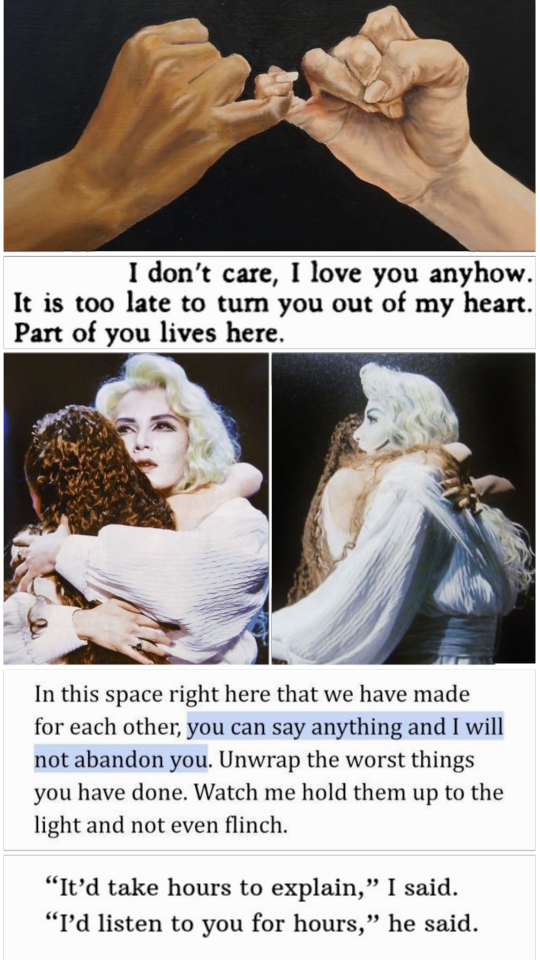







Before we were the same messy flesh, I’m sure we were the same dust.
on twin flames for my soph. happy birthday i’m glad for every lifetime we’ve spent together @vanirgo
maeve and aimee, sex education. anne sexton, a self-portrait in letters. trista mateer. strawberry blond, mitski. radio silence, alice roseman. the orange, wendy cope. a little life, hanya yanagihara. this is how you lose the time war, amal el-mohtar. mouthful of forevers, clementine von radics. the seven husbands of evelyn hugo, taylor jenkins-reid. friedrich nietzsche, from a letter to mathilde trampedach. dani & jamie, the haunting of bly manor.
#periphery#web weaving#poetry#art#collage#compilation#words#poem#quotes#dani and jamie#the haunting of bly manor#jamie taylor#dani clayton#maeve wiley#maeve wiley edit#sex education#aimee gibbs#mitski#mitski web weave#evelyn hugo#the seven husbands of evelyn hugo#friedrich nietzsche#for soph#dark academia#writing#parallel#literature#on love#text#spilled ink
275 notes
·
View notes
Text
TOP 3 Metal Albums I Enjoyed from 2023
A lot of great metal came out this year and it was hard to narrow it down to my Top 3. There were some great EPs released this year— Spiritbox’s The Fear of Fear, Brand of Sacrifice’s Between Death and Dreams and Knosis’s The Eternal Doom among them. Singles I enjoyed include: "On the Verge" by thrown, “Masterpiece” by The Anchor, “Enemy” by The Gentle Men (ft. Andy Cizek), “Weight of the World” by Harper (ft. We Came as Romans and Brand of Sacrifice), “Viking” by Slaughter To Prevail, "III" by DEATHPHONK (Nik Nocturnal's weird project); and Knocked Loose had the double, “Deep In the Willow”/“Everything is Quiet Now”.
My Top 5 honourable mentions: 5. [m]other by Veil of Maya, their newest does everything I want it to do, good riffs, cool effects, great vocals; 4. Soul Elegy by Termina, Nik Nocturna, Andy Cizek and friends deliver an awesome metal album; 3. Chaos Horrific by Cannibal Corpse is a strong entry and shows why they're still so loved after so long; 2. The Fox and the Bird by Ok Goodnight mixes folk, rock, metal and whatever else they want to create this really entrancing album; and 1. Take Me Back to Eden by Sleep Token is one of the albums I listened to the most because it's easy to put on when you're tired of being relentlessly pummelled by deathcore, but though its highs are super high, it just misses out landing on my top 3 because there are a few spots it lags
3. ...And Everything In Between - Unprocessed
Manuel Gardner Fernandes has quickly become one of my favourite guitarists between this release and Unprocessed's previous album Gold. The combination of styles on this album exemplify modern metal: bludgeoning heaviness, thumpy prog riffing (à la Animals As Leaders or Polyphia) and a mix of harsh and clean vocals. Despite the polish of these 9 tracks, some express such raw emotion and a ferocity that they really get me hyped up. The variety of tones and vocals kept me engaged throughout, and they blend and balance heaviness and melody so well. The guitar sounds so angry sometimes–especially the part of "Thrash" where Manuel beats the shit outta his guitar after screaming, "But you're just a fucking lie!" I love that. Other songs like "Blackbone" and "Die on the Cross of the Martyr" continue the trend of excellent instrumentation, the latter featuring guest solos by Polyphia's Tim Henson and Scottie Lepage. It's so well done and so engaging. In the short time I've had this album, it's become one of my favourites of 2023.
2. Periphery V: Djent Is Not A Genre - Periphery
When Periphery released "Wildfire" as a single I immediately bought into what they were selling. The way they transition through the various parts is seamless, the mix of vocal techniques and the jazzy interlude are all fantastic. It really captures the spirit of the whole record. Songs like "Dying Star" and "Zagreus" are also so hard. Periphery continues to show off their musical dexterity, and the band members prove once again they're not only some of the best musicians djenting their way through the world but as a collective they add up to more than the sum of their parts. My hottest take when it comes to this album is that I love "Silhouette" — it's like if you ran 80s soft rock and 90s/00s boy bands through a progressive music filter. I think they wrote this song and put it on the album just to prove they can do anything. And if Periphery is Djent, and Djent isn't a genre then why shouldn't they go in every genre direction they want to explore?
1. War of Being - TesseracT
In other years this top 3 could have been entirely deathcore or melodeath or metalcore, but this year it was djenty prog metal through and through. It's the music I gravitated to the most this year and nobody did it better than TesseracT. Daniel Tompkins vocals are incredible throughout, his cleans sounding particularly great on "Echoes" – giving us one of the best choruses before following it up with another great one on "The Grey". The album offers engaging lyricism throughout and the instrumentation is at a pedigree one would expect for a band in the vanguard of this genre. The album gives us atmospheric moments, synths, meditative passages before blasting us with metal. In many ways the whole album does what the best tracks on Sleep Token's Take Me Back To Eden do. Each song and the album as a whole provide an expansive experience. And that's why it's my number one. More than any other album released this year, TesseracT's War of Being makes me want to sit down and listen to it from beginning to end.
Other great albums: SUPERBLOOM by Silent Planet; Fatalism by Polaris; Feral by Left To Suffer; Foregone by In Flames; Ashen by Humanity's Last Breath; The Sin of Human Frailty by END; Symptoms of Survival by Dying Wish; and The Death We Seek by Currents.
#metal#heavy metal#death metal#deathcore#djent#metalcore#tesseract#war of being#periphery#periphery v#periphery v: djent is not a genre#djent is not a genre#unprocessed#...and everything in between#and everything in between#manuel gardner fernandes#veil of maya#termina#nik nocturnal#sleep token#silent planet#polaris#ok goodnight#left to suffer#in flames#humanity's last breath#end (band)#dying wish#currents#cannibal corpse
7 notes
·
View notes
Text
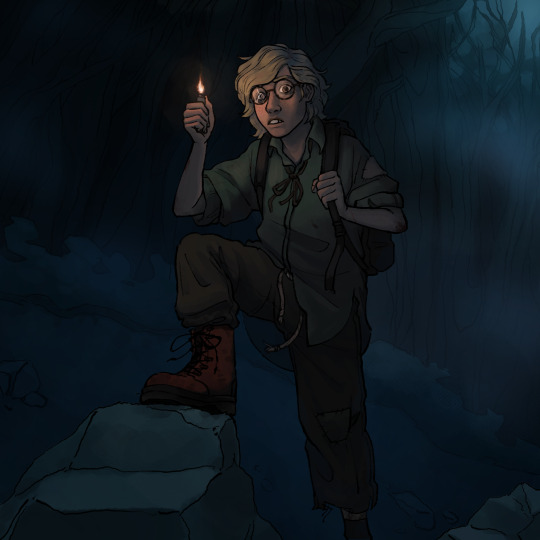
The return of a spooky friend, just in time for Halloween >:)
Hope all my followers and mutuals are having a cozy night, bc this poor little scamp is absolutely not lol
#digital art#horror art#ttrpg#character art#ttrpg oc#ttrpg character#oc art#digital artist#character design#digital illustration#original character#original characters#rural horror#small town horror#periphery#happy halloween
30 notes
·
View notes
Text
No lyrics, since it's just a piano instrumental 🖤

That link for his music wasn't a full link btw. The Way Back Machine sabotaged itself by adding the web.archive url in front of Ves's YouTube link and literally only showed what's saved lol. I can almost guarantee it was just a link to another video of his original music, 95% chance that I already have it or have already posted it.
#lost media#circa 2011#piano cover#icarus lives piano cover#periphery#periphery icarus lives#i love that ves loved this band so much#like i've never been super into periphery#they're not bad just not something i would make a choice to listen to#it was interesting though#going back and listening to periphery songs i hadn't thought of in over a decade#and hearing some absolute solid inspo for sleep token#is super cool
22 notes
·
View notes
Video
youtube
En la isla a veces habitada de lo que somos,
hay noches, mañanas y madrugadas
en que no necesitamos morir.
En ese momento sabemos todo lo que fue y será.
El mundo se nos aparece explicado definitivamente
y entra en nosotros una gran serenidad,
y se dicen las palabras que la significan.
Levantamos un puñado de tierra
y la apretamos en las manos. Con dulzura.
Allí está toda la verdad soportable:
el contorno, la voluntad y los límites.
Podemos en ese momento decir que somos libres,
con la paz y con la sonrisa de quien se reconoce
y viajó alrededor del mundo infatigable,
porque mordió el alma hasta sus huesos.
Liberemos sin apuro la tierra donde ocurren milagros
como el agua, la piedra y la raíz.
Cada uno de nosotros es en este momento la vida.
Que eso nos baste.
De Probablemente alegría, 1985
José Saramago
4 notes
·
View notes
Text
Jetpacks Was Yes! - Periphery (Live Piano Cover) - Leo Faulkner
Upload Date: February 23, 2012
Description:
"As a part of my new series of videos where I am playing various dandy tunes on a piano at the college I go to: Jetpacks Was Yes!
If you subscribe, you deserve a chocolate medal."
7 notes
·
View notes
